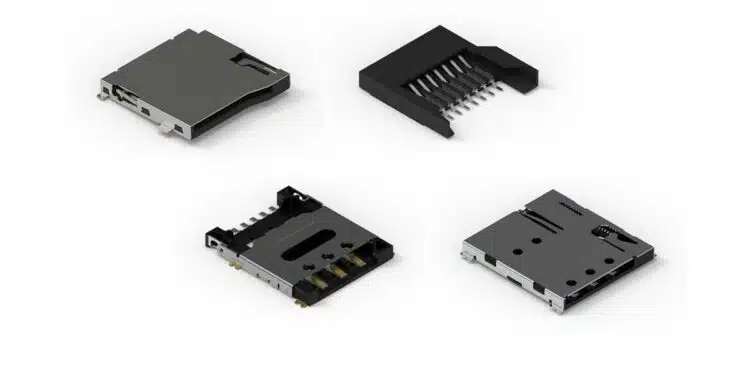Würth Elektronik introduces four new SMT-mountable card connectors and expands its range with solutions for the smallest packages.
The four Nano SIM and microSD card connectors feature high-quality workmanship with partially gold-plated contacts and their impressive number of mating cycles mean they have a very long service life.
The new card connectors from Würth Elektronik are each available in two mechanical versions.
The WR-CRD Nano SIM Card Connector Push-Push features the familiar spring mechanism, whereby the card is pressed deeper into the slot to release the mechanism. It can be actuated at least 3,000 times. The WR-CRD Nano SIM Card Connector Hinge has a mechanism that withstands no fewer than 5,000 mating cycles.
The microSD cards are available in the WR-CRD MicroSD Card Connector Push-Pull and WR-CRD MicroSD Card Connector Push-Push versions. The Push-Pull version in which the card is held in the connector by friction alone withstands 5,000 mating cycles. Würth Elektronik’s Push-Push version featuring card detection achieves a durability of 10,000 mating cycles.
Compact and robust
Besides telecommunications applications, SIM cards also play a major role in the Internet of Things, as decentralized IoT devices and sensors often use mobile networks to connect to the internet.
SD cards frequently serve as exchangeable local storage media for these devices. To address the demands of industrial applications, Würth Elektronik ensures a robust design for its card connectors. The liquid crystal polymer insulating material conforms with the UL94 V-0 flammability class, and the operating temperature range extends from -25 to +85°C – with one version of the WR-CRD MicroSD Card Connector Push-Push even rated for -40 to +85°C.
































